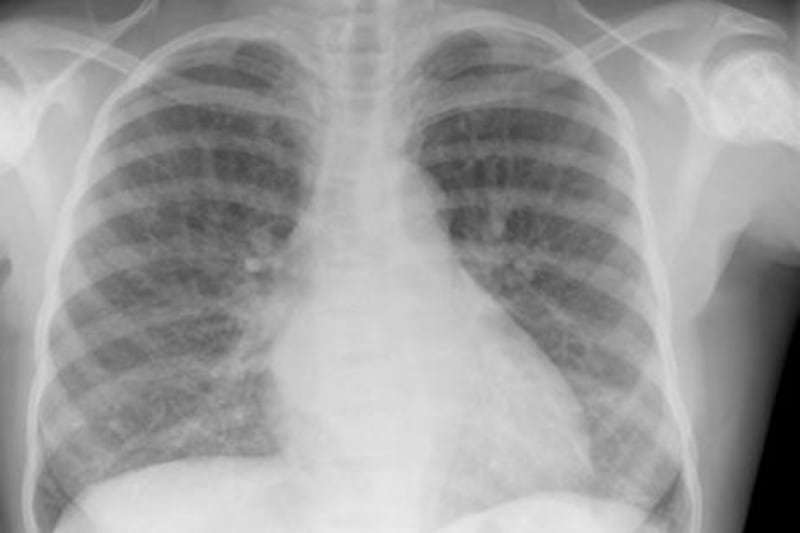Treatments focus on preventing pain and organ damage from sickle cell disease, prevalent in the Arab world. Rob Kemp reports
In what could look like a landmark month in getting a grip on sickle cell disease, two vital pieces of research published this month not only shed light on the character of the illness, but also offer new hope for treatment.
While sickle cell anaemia is a genetic disorder that affects millions of people across the globe, it's especially prevalent in the Arab world with some of the highest frequencies per head of population found in Saudi Arabia (5.2 per cent), Oman (3.8 per cent), Bahrain (2.1 per cent) and the UAE (1.9 per cent), according to data from the Centre for Arab Genomic Studies.
As a result, many Arab countries undertake much of the research work carried out worldwide - examining the clinical features, the genetics and management of the disease. However, the latest study to raise hopes in targeting and treating the causes of sickle cell comes from the US and Japan, specifically a team of geneticists from the universities of Michigan in the US and Tsukuba, in Japan.
The study focused on the production of red blood cells and its findings were presented initially in the Proceedings of the National Academy of Sciences. Early indications are that this is a breakthrough in discovering ways to prevent the painful episodes and organ damage that occur with the disease. Laboratory trials involved the use of specific proteins (labelled TR2 and TR4) to double the level of foetal haemoglobin - the protein that transports oxygen in babies before they are born and for around six months afterwards. The results from tests on sickle cell mice showed much reduced organ damage.
"The vast majority of sickle cell disease patients are diagnosed early in childhood when adult haemoglobin normally replaces foetal haemoglobin," explained Dr Andrew Campbell, the director of the Pediatric Comprehensive Sickle Cell Program at the University of Michigan's Comprehensive Cancer Center. "But the severity of the disease can differ markedly, correlating most strongly with the level of foetal haemoglobin present in red cells."
A small percentage of sickle cell patients are born with a high enough foetal haemoglobin level to reduce the severity of the more painful complications. The study team focused on finding a method of artificially boosting these foetal haemoglobin levels in sufferers.
"While the average foetal haemoglobin was 7.6 per cent in the sickle cell mice, the mice treated with TR2/TR4 had an average foetal haemoglobin of 18.6 per cent," says the senior study author James Douglas Engel, whose team also recorded improved anaemia and red blood cell turnover among the treated mice.
Of course, the development is at a very early stage - further studies and clinical trials would be needed to find out to what extent it could help human sufferers. But the targeting of specific proteins to prevent the disease marks a new direction for sickle cell research and suggests new drugs may be on their way.
Currently in the US, hydroxyurea is the only approved drug known to increase the levels of foetal haemoglobin within sickle cell disease patients. "Research shows that a substantial number of patients do respond to it," Campbell added. "But the long-term consequences for hydroxyurea are unknown, especially in children."
The University of Michigan findings came after an interesting development in the understanding of the make-up of sickle cell disease, published in the medical journal Science. What has been cited as a "medical mystery" for the past 70 years appears to have been solved, almost, by two medical teams from Heidelberg University in Germany, and the Biomedical Research Center Pietro Annigoni in Ouagadougou, Burkina Faso.
It all surrounds the fact that carriers on one mutated form of the gene that causes sickle cell anaemia are immune from the disease malaria. The medical phenomenon was first discovered by the British geneticist, Anthony Allison, during his work in equatorial Africa in the 1950s. He found that up to 40 per cent of people he examined were carriers of the gene that appeared to protect them from one of the world's deadliest diseases.
Using the latest electron microscopy methods, the researchers ran comparisons between healthy red blood cells, normal cells infected with malaria and cells from people carrying the sickle-cell disease along with the mutated version. While the malaria virus was able to damage red blood cells to the point of causing the characteristic inflammation of the disease, the cells housing the mutated sickle cell gene were able to sabotage malaria's attempts to take hold of the host cells.
The new discoveries on the functions of both sickle cell and malaria, along with the complexity of the work involved, have been described as "a huge step forward" by experts at the US National Institute of Allergy and Infectious Diseases. Researchers into malaria have also been greatly encouraged by new findings from the King Abdullah University of Science and Technology (KAUST) in Thuwal, Saudi Arabia, released also this month.
The KAUST biologist Arnab Paint was among a group who engineered a new technique that enables biologists to manipulate the genes of a malaria-causing parasite at least 40 times faster than standard techniques.
This ongoing pioneering approach to sickle cell anaemia is the highlight of an exceptionally progressive month of research presentation. The latest findings follow a year in which much focus has been put upon the issues surrounding genetic diseases, including the launch of a new screening and counselling programme by the Health Authority - Abu Dhabi. The programme has been designed to allow couples to test for a greater range of diseases - including thalassaemia, sickle cell and other blood disorders - than was previously available at any one of nine health centres based in Abu Dhabi, Al Ain and Al Gharbia. The launch was preceded by news from the Centre for Arab Genome Studies, which has identified more than 260 genetic diseases in the UAE.
[ artslife@thenational.ae ]






